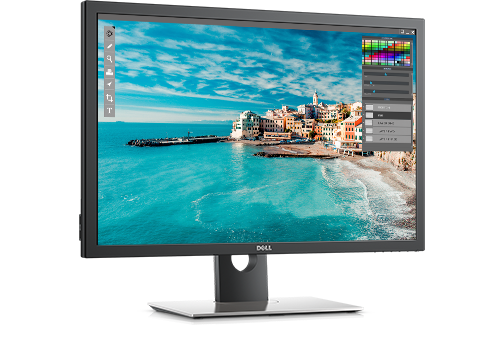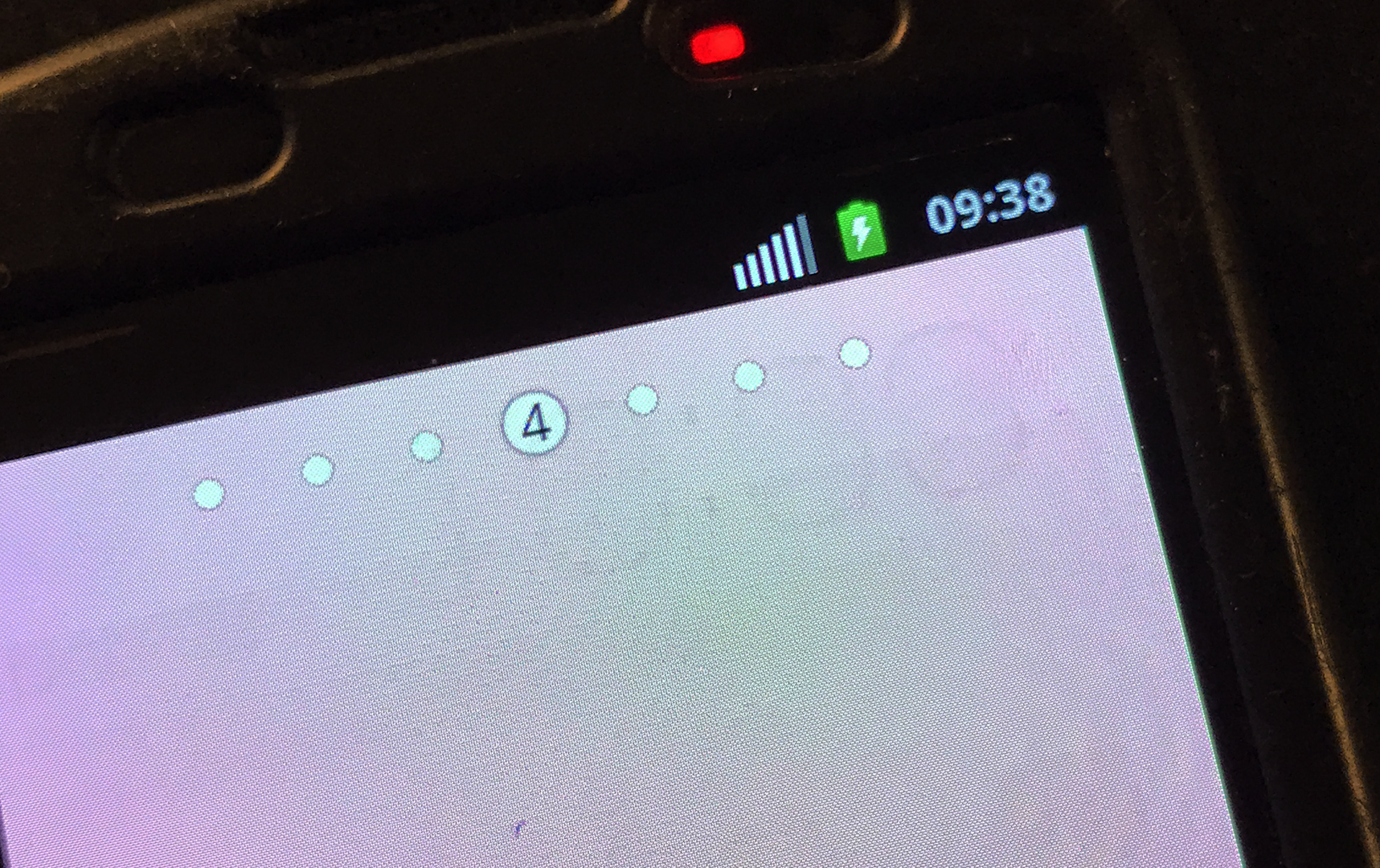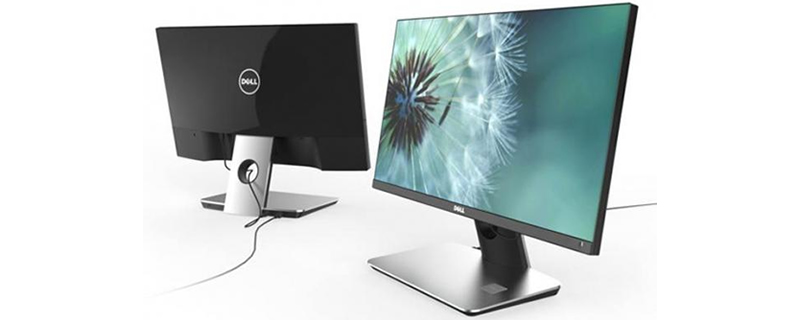When should we expect OLED PC monitors?

Gamers have been hearing about the miraculous promise of OLED PC displays for years, but actual hardware releases have been few and far between. It’s not that we haven’t seen OLED screens elsewhere—and that’s the problem, really. Mobile phones, tablets, and televisions have had them for awhile. If OLED displays can sit across the couch in the living room or comfortably in your pocket, why aren’t they on desktops everywhere? Answering that question begins between the bezels, with an understanding of the technology and how it differs from other displays available today.
Unlike LCD technology, which relies on separate backlighting such as LEDs to achieve brightness, OLED screens create their own light by applying electrical current to a series of thin organic films composed of carbon and hydrogen placed between two conductors. This makes every pixel in an OLED display a light source, which eliminates much of the complexity in competing LCD screens.
This high-tech, simplified display pipeline pays off in all kinds of ways. OLEDs are thinner, generally use less power, are more durable, provide better contrast, pure blacks, deeper color, wider viewing angles, and refresh rates Edit: response times up to 100 times faster than competing technologies. They can also easily be made transparent and flexible, which opens all kinds of interesting applications.
But there are a few serious obstacles keeping OLED out of our hands.
Money matters
The first constraint is cost. OLED panels are new technology, and the yield rates remain far behind more mature LCD manufacturing techniques. Early yield numbers for OLED were dismal, with just one out of ten screens making it out of the factory. Constant improvements have increased these rates dramatically, but not enough to make OLED a cheap alternative. Failure rate at the factory is still around 50 percent for 4K panels.

Every failed panel translates to a higher cost for the remaining batch, so manufacturers need to carefully choose which products get OLED screens. Tiny cellphone screens are a perfect market, because a defective 5-inch screen is much cheaper to deal with than a defective 24-inch screen, and the massive volume the mobile market enjoys can absorb the hit to the bottom line caused by the cost of low yield, but highly desirable displays.
Television sets using OLED technology came later, after yields improved enough to justify large sizes, but still enjoy enough mass-market volume sales to offset yield failures in manufacturing. Profit margins help here too. While 1080p OLED television sets have come down massively in price, the 4K versions becoming prevalent are still sitting at down-payment pricing levels.
Keep up to date with the most important stories and the best deals, as picked by the PC Gamer team.
While you can bet the 50% yield rate has plenty to do with these premiums, high prices are also a reflection of the upper-end of the TV market, which has traditionally been a high-rent neighborhood happy to pay extra for posh technology. Desktop monitors represent just a fraction of either of these, so PC gamers have had to wait in line behind more lucrative customers—although there are less cynical reasons for the desktop delay, too.
Burn-in barriers
One of problems with OLED displays on desktop computers is image retention, or burn-in. The RGB elements that make up an OLED pixel don’t degrade at a uniform rate, which means high contrast images tend to leave behind a ghost if displayed for too long, and color balance shifts over time.
Televisions and mobile phones either don’t display static images frequently or shut off after a few moments to save power, and get around remaining potential burn-in problems with a few tricks like pixel shifting and oversized blue elements, but these have limited effect in a desktop environment where most screens are static and remain that way for hours at a time. The truth is that without special care, OLEDs will show wear and color problems.

This makes the working life of an OLED screen shorter than its LCD counterparts, which along with the hefty price premium starts to sour the value situation outside of highly specialized circumstances, such as medical treatment or video production. It’s no coincidence that niche industries that traditionally pay top dollar for specialized equipment are among the first to have desktop-grade OLED monitors available.
Finally: OLED incoming
Fortunately, the situation is finally showing signs of movement. Televisions are making significant strides towards usage as computer desktop monitors, and many OLED sets suitable for console gaming make good alternatives to PC monitors, although picking a set with the right features, optimal size, and minimal post-processing is harder than it sounds. LG's 4K OLED TVs are the current benchmark for picture quality, particularly with HDR, but many gamers have criticized them for heavy input lag.

The more direct answer for OLED gaming on the PC right now comes in the form of the Alienware 13 laptop. While you don’t get a proper, upgradable desktop monitor, you do get an excellent all-in-one lightweight gaming package that rocks a Pascal-based, 1060 GPU along with a 13.3-inch 2560x1440 WQHD OLED display. Best part is the price, delivering the entire gaming-class laptop for the cost of an entry-level OLED TV, or around $1200.
There’s a final option left for the OLED obsessed: Dell’s amazing 30-inch 4K UltraSharp UP3017Q OLED monitor. This dream-list display has just about everything, including wide color support, perfect desktop sizing, 120 Hz refresh rate and .01 ms response time, along with several novel features to prevent screen burn-in, including a face detection mechanism that shuts off the display when you aren’t looking at it. All that’s missing is G-Sync or Freesync and HDR.
There’s just one catch; they will retail for a cool $5000 once released in January 2017. Dell has already let the shipping date slip twice on this product, which reveals plenty about OLED technology and the current computer marketplace.

So unless you’re ready to go mobile, game from the couch, or drop a bundle on the bleeding edge, OLED is still a few iterations away from viable desktop PC gaming. Don’t worry, though. There’s plenty of action in the PC monitor space these days without OLED. You’ll have to content yourself with gaming on 34” ultrawide screens, or make do with 144 Hz refresh rates in the meantime. What a hard life.

